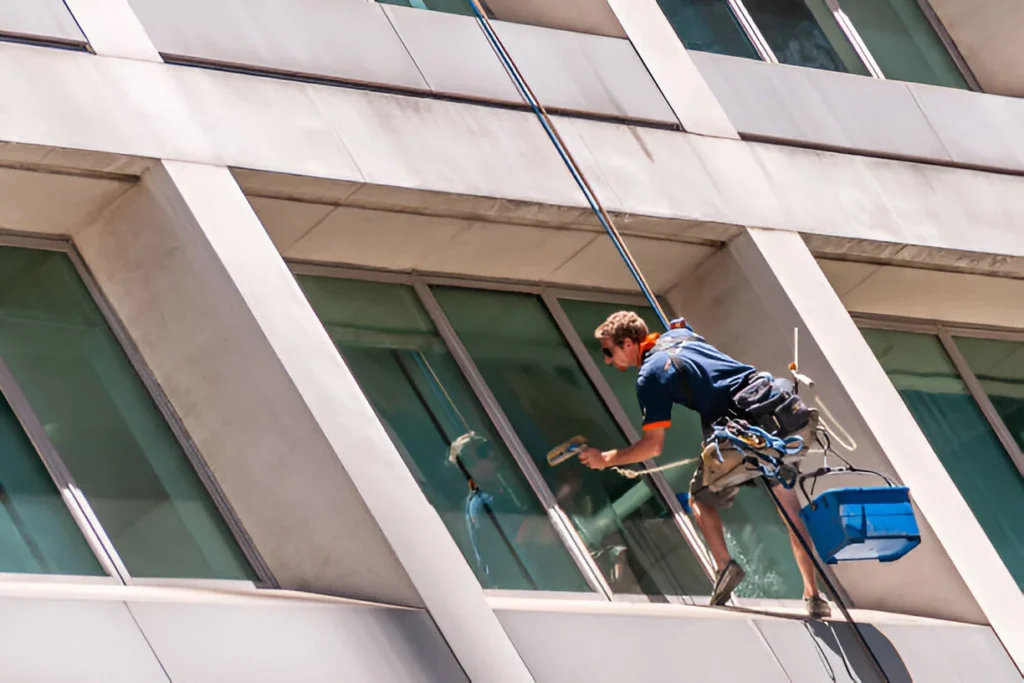Urban maintenance is an essential aspect of ensuring cities are safe, aesthetic, and resilient against the wear and tear imparted by time and the elements. Among the various tasks that urban maintenance encompasses, painting and exterior upkeep of high-rise buildings pose significant challenges. Traditional methods such as scaffolding not only prove to be costly but also time-consuming and disruptive. This is where innovations like rope access painting in Sydney have begun to mark their significance in urban maintenance by enabling professionals to scale new heights with increased efficiency and safety.
The Emergence of Rope Access Techniques
Rope access techniques have revolutionised the way maintenance and repairs are conducted on buildings and structures. Originating from techniques used in climbing and caving, rope access has become a preferred method for its minimal environmental impact and ability to quickly access difficult areas without the need for invasive equipment.
Adapting to Urban Landscapes
In the bustling urban landscape of Sydney, with its ever-growing skyline, the adaptation of rope access techniques for building maintenance is not just an innovation but a necessity. With limited spaces for scaffolding and the inconvenience that it can cause to pedestrian and vehicle traffic, rope access presents a less obstructive alternative.
The Advantages of Rope Access Painting
There are numerous advantages associated with the implementation of rope access for painting urban structures. First and foremost is safety. Rigorous safety standards and protocols necessitate highly trained individuals to perform these tasks. This results in a significantly lower accident rate compared to traditional methods.
Cut Down Costs and Time
Another significant benefit of rope access painting is the reduction in costs and time. Erecting and dismantling scaffolding can take up a considerable amount of the project’s budget and timeline. Rope access involves fewer setup procedures, allowing tasks to commence quicker and be completed within shorter time frames.
Environmental and Aesthetic Impacts
When considering the environmental footprint of building maintenance, rope access stands out for its minimal reliance on heavy machinery, leading to a reduction in emissions and noise pollution. Moreover, it preserves the aesthetic integrity of the surroundings by eliminating obstructive structures like scaffolding, which is especially important for the visual appeal of tourist-heavy cities like Sydney.
Fostering Innovation in the Industry
The transition to methods like rope access signals a move towards fostering innovation within the urban maintenance industry. Companies that embrace such advancements gain a competitive edge and position themselves as forward-thinkers in a market that increasingly values modern, efficient, and eco-friendly practices.
Training and Certification
Implementing advanced techniques such as rope access painting requires comprehensive training and certification of technicians. It ensures not only the safety but also the quality of workmanship, which is of paramount importance in maintenance tasks that affect the longevity and appearance of buildings.
Ensuring Quality and Reliability
Quality and reliability are foundational elements in the services provided by companies specialising in rope access. There is a strong emphasis on continuously upgrading skills and staying updated with the latest methods to ensure the highest industry standards are maintained. This is essential for gaining the trust and satisfaction of clients, particularly in a demanding urban context.
Challenges in Rope Access Urban Maintenance
While the benefits are plenty, there are still challenges in rope access urban maintenance. These include navigating the complex regulations that govern building maintenance works and ensuring compliance with all safety and quality guidelines. Additionally, the unpredictability of weather can further complicate scheduling and the execution of tasks.
Custom Solutions for Urban Infrastructure
Each urban structure comes with its unique challenges. Therefore, the solutions offered by rope access services must be customised. Technicians need to assess each project and develop a tailored plan that addresses the specific needs of the structure while keeping efficiency and safety at the forefront.
Future Prospects of Rope Access Techniques
The future of rope access in urban maintenance looks promising as more businesses and city planners recognise its potential. As technology evolves, there could be even more sophisticated equipment and methodologies that enhance the capabilities of rope access technicians and broaden the scope of services offered.
The Roles of Policy and Innovation
Government policies and building codes will play a crucial role in shaping the path for innovations like rope access painting. By laying down regulations that promote safer, greener, and more efficient practices, the industry can be guided towards a sustainable model of urban maintenance that benefits all stakeholders.
Conclusion
As cities like Sydney continue to expand and strive for modernisation, urban maintenance must adapt to overcome the challenges posed by dense architecture and high-rise domination. Innovations such as rope access painting are pivotal in this transformation, offering a viable solution that combines safety, efficiency, and environmental consciousness. The ingenuity on display in this aspect of urban maintenance is not just about scaling physical heights but also about elevating industry standards and paving the way for a progressive urban future.
The Threshold of Change
In conclusion, as urban landscapes become more complex, maintenance solutions such as rope access painting become indispensable. For Sydney and similar metropolises, the transition towards such innovative methods isn’t just about staying abreast with city maintenance; it’s about leading the charge in setting new benchmarks for safety, sustainability, and cost-effectiveness in preserving the vitality of urban infrastructure for generations to come.
Also Read: What Roofers Recommend for Winter-Proofing Metal Roofs


